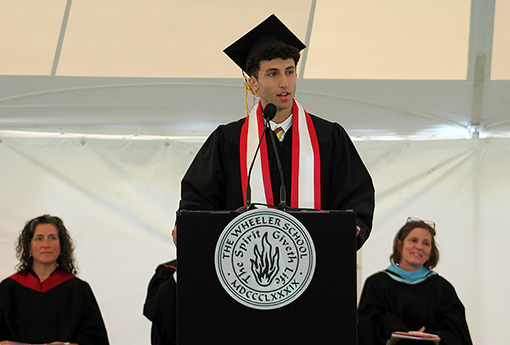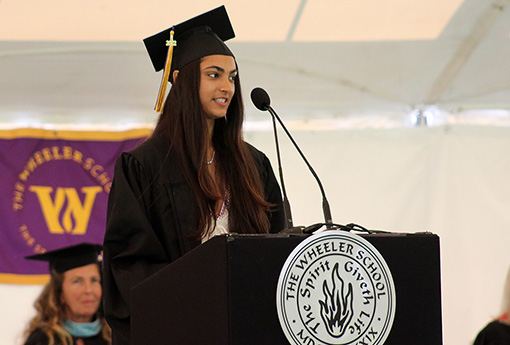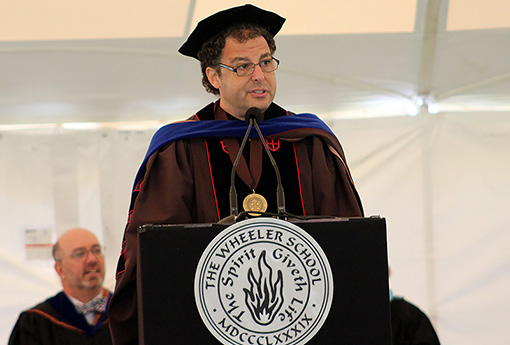
Student Voice: Maya Pensa ’19
June 21, 2019
Thinking about her joint Italian and Indian heritage, senior Maya Pensa ’19 delivers the morning address to students in Grades N-5 at the 2019 Lower School Unity & Diversity Day.
“You are not 50 percent Indian and 50 percent Italian,” said Ammamma, as the two of us knelt down and spread flower petals around the feet of the Krishna statue in the dining room of my grandparents’ home. “You are 100 percent Indian and 100 percent Italian.” I knew better than to start an argument with my grandmother, the dictionary definition of the word matriarch, so I nodded although I didn’t actually agree.
While my skin color more closely reflects my Indian heritage, I had always identified as white. I live closer to, and spend a great deal of time with, my Italian relatives so I have identified most closely with them. Furthermore, not only was I born in America, I was born in its capital. I relish American Thanksgivings and the Fourth of July fireworks. Throughout elementary school I stood to recite the Pledge of Allegiance and sing patriotic songs every day, proclaiming my patriotism with my right hand over my heart. Being raised in a country with such a strong sense of national pride, nationality was far more important to me than ethnicity. I didn’t realize that by ignoring the stories behind my biracial ethnicity I was ignoring what it truly means to be American.
The short list of ethnicities I had to choose from on a standardized test in first grade did not capture how I identified myself. I turned to my friend and asked what the word ‘Caucasian’ meant. She told me it meant half-Asian, so after a minute of debating whether or not India counted as an Asian country, I clicked the button and labeled myself Caucasian. I continued to do so for another few years until another student asked the teacher what Caucasian meant and I realized I had been misinformed.
Several years later, I began to realize the importance of my ethnicity when I traveled with my grandparents on a trip to India. I had already known that my grandfather grew up in an Ashram and on the streets of India. He studied incredibly hard to attend graduate school in America and had an arranged marriage with my grandmother. However, it was only when my sisters and I chased frogs around the Ashram or when I milked the cows on the family farm like my grandmother once did that their stories actually felt real to me. When the village girls came to visit they gave me a handmade necklace that I still cherish; in return, we watched their awed reactions as we used Kool-Aid mix to turn water into fruit punch. We held hands and danced and for once Indian culture didn’t feel like a labyrinth that started at my grandparents’ doorstep, but rather like a gift that could make me feel at home amongst people I barely knew.
When I returned home I began to more easily synthesize my Indian and Italian roots. At weekly Sunday dinners with my Italian side, I attempted to learn the names of the different types of pasta and embraced saying “Buonanotte, ci vediamo domani” to my family instead of “goodnight”. I helped my Indian grandmother to make the biryani and masalas that we served alongside the turkey and mashed potatoes on Thanksgiving. At first, I saw these small displays of culture as what made me Indian or Italian, and what separated me from being American. Now, I see them as symbols of what makes me an American.
America, founded by immigrants, is now home to an incredible mix of ethnicities and cultures. These intersections are a large part of what makes being American, Indian, and Italian so powerful and meaningful for me. These intersections of my identities have fueled my curiosity for continued exploration of cultural heritage, including my own – an exploratory process that will take an entire lifetime to complete.
Presented to the Wheeler Lower School on Unity & Diversity Day, January 2019

